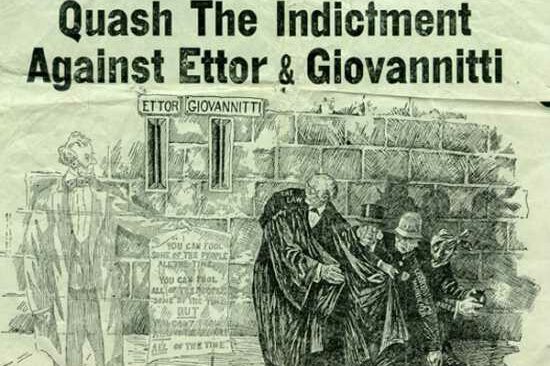Dear Readers, July jottings with an Italian Connection: America’s first lady Eleanor Roosevelt (1933-1945), in a Fourth of July, Hyde Park, N.Y. parade, rode in a FIAT Roadster. Why would a tall woman like Eleanor squeeze herself and her hefty chauffeur Tubby Curnan into a FIAT to ride in a parade? It turns out the FIAT roadster was provided by her son Franklin Jr, who owned the FIAT agency in the United States and spent his working days importing and distributing FIAT automobiles (and an occasional Jaguar) into the USA.
Gianni Agnelli, then a bachelor, was introduced to the Roosevelts via his friendship with Pamela Churchill, ex wife of Winston Churchill’s son Randolph, whom Sir Winston was very fond of.
***
Bocce, played initially in the Italian Alps over 2,000 years ago, consisted of the underhand tossing of stones. It was then exported to Germany in the form of bowling at pins, circa fourth century AD and was a precursor to bowling.
***
China’s Communist revolution in 1949 sent an influx of Cantonese speakers into New York’s Little Italy, where they gradually became the dominant group in Transfiguration Parish, the oldest Catholic church building in New York City —built in 1801– which served mainly Italian immigrants.
***
E.S.L., the English as a Second Language category is where many of our parents and grandparents found themselves when they first came to America. As I recall, many of them still did not speak the English so good forty years later. I mention this as a gentle reminder, because many of our churches now have priests and seminarians for whom the English is a second language. So have a little “compassione“.
***
Geraldine Ferraro, left us (March 26, 2011) at age 75. I met her several times when she was in California after she accepted the nomination for vice president at the 1984 Democratic National Convention in San Francisco, as Walter Mondale’s presidential nominee’s running mate. Geraldine Ferraro’s acceptance speech, a moment in history as she was the first woman on a major party ticket, was the highlight of the 1984 Democratic Convention. A three-term Congresswoman from Queens and the first woman vice presidential candidate on a major ticket, Ferraro graciously accepted the decision of voters, however, she was disappointed that major voices in our National Italian-American community remained silent when ethnic slanders surfaced.
In her book Changing History (1994), Women, Power, and Politics, she recalled the bruising, often repeated but undocumented reports that she had family ties to organized crime.
Ferraro says she did not worry much about the charges when they surfaced in her 1984 vice-presidential campaign for two reasons: she knew they weren’t true and she knew that leaders of the Italian American community had a history of standing up against slander. She was half right.
“But I was wrong about the second part. In fact, for those four months, most of our community rolled over and played dead. When the New York Post published story after story suggesting that the Zaccaro family was connected with organized crime, with no data to support the claim, our community was silent…When the Wall Street Journal, in one of the most irresponsible articles of the campaign, tried to link my father-in-law to the mob, never did our community rise up and say Enough!”
Why did so few stand up for her, she wonders. Because she was a woman? Her politics? If these were the reasons, why didn’t anyone say so? Ferraro notes that at the time a few journalists corroborated her suspicion that gender had a lot to do with it.
They reported that whenever major American publications mentioned an Italian-surnamed man in the same story with the words “organized crime,” they evoked an immediate reaction from Italian American community leaders. Not so with Ferraro.
In so many words, she charged those who were silent with collaboration against the many hardworking, decent Italian American families who suffered the tired ethnic jokes and whispered suspicions.
She was clearly angry and hurt, but gutsy and resolute, as she explained why she could never let such slurs go unchallenged. “About eighty years ago, my grandfather was a street cleaner for New York City. He had finished sweeping the street and a woman came up and threw garbage where he had just swept. He only spoke Italian, so he yelled at her in that language. She screamed at him, “I’ll get you fired, Wop“. And so she did and he is one of the reasons why I will continue to speak up against bigotry, for dignity…for us all…
In 1996, NOIAW (National Organization of Italian American Women) organized Concerns for Women in the 21st Century, a conference and tour with stops in Rome and Palermo for “A Dialogue for Italian and American Women.”
My daughter Caterina and I flew over and since Geraldine Ferraro and Matilda Cuomo were keynote speakers, following the all day conference, an evening reception at Villa Taverna, home of the US Ambassador to Italy, was held for all us attendees. During the week it became clear that Ferraro’s time spent teaching in the classroom, prosecuting for the Queens District Attorney’s office and caring for her widowed, ailing, elderly mother had given her insights that shaped her votes and legislation as a US Representative. May she rest in peace and not meet any of those “Silent Signors” in heaven.
***
Cari lettori,
Appunti di luglio con un collegamento italiano: la first lady americana Eleanor Roosevelt (1933-1945), in una parata del 4 luglio ad Hyde Park, N.Y., su una FIAT Roadster. Perché una donna alta come Eleanor avrebbe dovuto schiacciare se stessa e il suo pesante autista Tubby Curnan su una FIAT per partecipare a una parata? Si è scoperto che la FIAT Roadster gli fu fornita da suo figlio Franklin Jr, che possedeva l’agenzia FIAT negli Stati Uniti e che passava le sue giornate lavorative importando e distribuendo automobili FIAT (e occasionalmente Jaguar) negli Stati Uniti. Gianni Agnelli, allora scapolo, fu presentato ai Roosevelt attraverso la sua amicizia con Pamela Churchill, ex moglie del figlio di Winston Churchill, Randolph, a cui Sir Winston era molto affezionato.
***
Le bocce, a cui si giocava inizialmente sulle Alpi italiane oltre 2.000 anni fa, consisteva in un lancio basso di pietre. Fu poi esportato in Germania sotto forma di bowling ai birilli, circa nel IV secolo d.C. e fu un precursore del bowling.
***
La rivoluzione comunista cinese del 1949 causò un afflusso di cantonesi nella Little Italy di New York, dove gradualmente divennero il gruppo dominante nella Transfiguration Parish, la più antica chiesa cattolica di New York City – costruita nel 1801 – che serviva soprattutto gli immigrati italiani.
***
E.S.L., inglese come seconda lingua, è la categoria sotto cui si sono trovati molti dei nostri genitori e nonni quando sono venuti in America per la prima volta. A ben ricordare, molti di loro ancora non parlavano bene l’inglese dopo quarant’anni. Cito questo come un dolce promemoria, perché molte delle nostre chiese hanno ora sacerdoti e seminaristi per i quali l’inglese è la seconda lingua. Quindi abbiate un po’ di “compassione“.
***
Geraldine Ferraro, ci ha lasciato (26 marzo 2011) a 75 anni. L’ho incontrata diverse volte quando era in California dopo aver accettato la nomina a vicepresidente alla Convention Nazionale Democratica di San Francisco del 1984, come compagna di corsa del candidato alla presidenza Walter Mondale. Il discorso di accettazione di Geraldine Ferraro, un momento della storia in cui fu la prima donna ad entrare in un importante partito, fu il momento culminante del Congresso Democratico del 1984. Deputata del Queens per tre mandati e prima donna candidata alla vicepresidenza di un importante partito, Ferraro accettò gentilmente la decisione degli elettori, ma rimase delusa dal fatto che le voci più importanti della nostra comunità nazionale italo-americana rimasero in silenzio quando venenro fuori calunnie etniche.
Nel suo libro Changing History (1994), Women, Power, and Politics, ha ricordato le voci, spesso ripetute ma non documentate, di avere legami familiari con la criminalità organizzata.
Ferraro dice di non essersi preoccupata molto delle accuse quando sono emerse durante la sua campagna vicepresidenziale del 1984 per due motivi: sapeva che non erano vere e sapeva che i leader della comunità italoamericana avevano una storia di resistenza alla calunnia. Aveva ragione a metà.
“Mi sbagliavo sulla seconda parte. Infatti, per quei quattro mesi, la maggior parte della nostra comunità si è voltata dall’altra parte e ha fatto finta di essere morta“. Quando il New York Post ha pubblicato una storia dopo l’altra, suggerendo che la famiglia Zaccaro era legata al crimine organizzato, senza dati a sostegno della denuncia, la nostra comunità è rimasta in silenzio… Quando il Wall Street Journal, in uno degli articoli più irresponsabili della campagna, ha cercato di collegare mio suocero alla mafia, la nostra comunità non si è mai sollevata nè ha detto Basta!”.
Perché così poche persone l’hanno difesa, si chiede. Perché era una donna? Per le sue politiche? Se queste erano le ragioni, perché nessuno l’ha detto? Ferraro nota che all’epoca alcuni giornalisti confermarono il suo sospetto che il genere femminile avesse molto a che fare con tutto questo.
Riportavano che ogni volta che le maggiori testate americane menzionavano un uomo dal cognome italiano nella stessa storia in cui si parlava di “criminalità organizzata”, provocavano una reazione immediata da parte dei leader della comunità italo-americana. Non così con Ferraro.
In poche parole, ha accusato coloro che tacevano di agire contro le tante famiglie italo-americane laboriose e dignitose che subivano le vecchie battute etniche e i sospetti sussurrati.
Era chiaramente arrabbiata e ferita, ma coraggiosa e risoluta, poiché spiegava che non avrebbe mai potuto lasciar impuniti tali insulti. “Circa ottant’anni fa, mio nonno faceva l’addetto alle pulizie stradali a New York City. Aveva finito di spazzare la strada e una donna si avvicinò e gettò la spazzatura dove lui aveva appena spazzato. Parlava solo italiano, così le urlò contro in quella lingua. Lei gli gridò: “Ti faccio licenziare, italiano“. E così fece e lui è uno dei motivi per cui continuerò a parlare contro il bigottismo, per la dignità… per tutti noi…”.
Nel 1996, NOIAW (Organizzazione Nazionale Donne Italo-Americane) ha organizzato nel 1996 Concerns for Women in the 21st Century, una conferenza e un tour con tappe a Roma e Palermo per “Un dialogo per le donne italiane e americane”.
Mia figlia Caterina ed io abbiamo preso l’aereo e, poiché Geraldine Ferraro e Matilda Cuomo sono state le relatrici principali, dopo la conferenza, si è tenuto un ricevimento serale a Villa Taverna, sede dell’Ambasciatore degli Stati Uniti d’America in Italia, per tutti noi partecipanti. Durante la settimana è emerso chiaramente che il tempo trascorso da Ferraro a insegnare in classe, a perseguire il procuratore distrettuale del Queens e a prendersi cura della madre vedova, malata e anziana, le aveva dato un’impronta che ha dato forma al suo impegno e alla sua legislazione in qualità di rappresentante degli Stati Uniti. Possa riposare in pace e non incontrare nessuno di quei “Signori rimasti in silenzio” in paradiso.
***






























